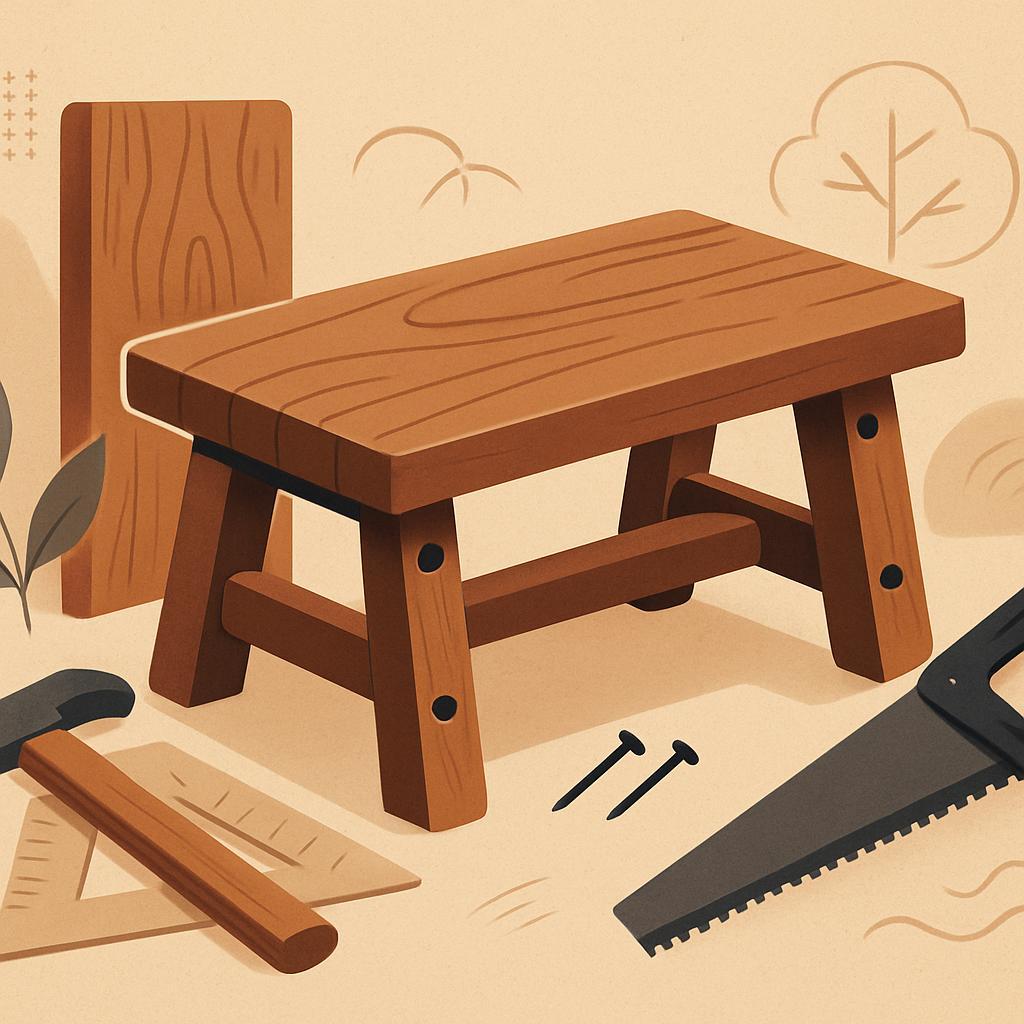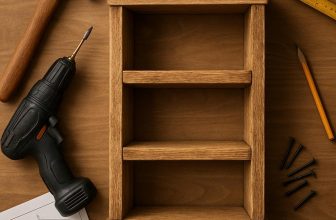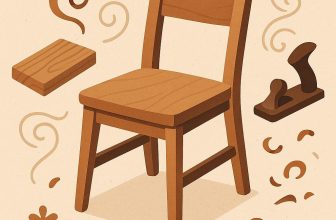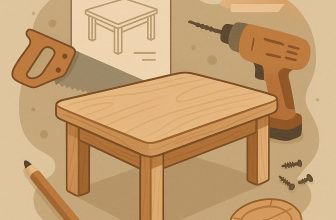
Build a bench that can survive rain, sun, and the constant tug of daily life-and make it sing with craftsmanship. For woodworking enthusiasts, a sturdy bench is more than furniture: it's a proving ground for joinery, material knowledge, and finishing technique, a reliable workmate and outdoor stage in one.This guide walks you through planning, selecting durable woods, choosing joints, and assembling with precision.You'll learn how to size for comfort, test strength, select fasteners, and weatherproof a bench that shines indoors or holds up outdoors. by the end, you'll be ready to cut, glue, and finish with confidence.
Choosing the right wood and materials for indoor and outdoor durability
Choosing the right wood and materials sets the foundation for a bench that lasts. Indoors, you'll want stability and a finish that preserves beauty with minimal upkeep.Outdoors, prioritize rot resistance and moisture tolerance. Common indoor options include pine,poplar,and oak-affordable,workable,and forgiving as you shape legs or add a backrest. For exterior use, consider cedar, redwood, tropical hardwoods, or pressure-treated lumber that's specifically rated for outdoor exposure. The goal is to balance workability, budget, and the surroundings where the bench will live.
| Species | Best use | Rot/Decay Resistance | Workability | Estimated Cost |
|---|---|---|---|---|
| pine (softwood) | Indoor benches | low | Very easy | Low |
| Cedar | Outdoor or mixed | High | Good | Medium |
| Redwood | Outdoor | Good | Easy | Medium |
| Teak | Outdoor | Excellent | Moderate | High |
| Treated pine | Outdoor | Moderate to High | Easy | Low to Medium |
finishes play a crucial role in durability. For indoor benches, a clear polyurethane, varnish, or penetrating oil helps seal the grain while remaining pleasant to the touch. Outdoors, choose exterior-grade sealants or varnishes with UV blockers and robust abrasion resistance. Apply thin coats, sand lightly between applications, and allow full cure between steps.Outdoor finishes typically require reapplication every 1-3 years,depending on climate and use.
Hardware and joinery choices are the second line of defense against wear. Use corrosion-resistant fasteners-stainless steel, silicon bronze, or hot-dip galvanized-for outdoor benches.Pre-drill to minimize splitting, especially in hardwoods, and consider durable joinery like mortise-and-tenon or dowel joints for long-term stability. Seal end grain and ensure proper drainage at feet to slow moisture ingress.
Decision is easiest when you match wood to environment, acclimate lumber to your space for a week before assembly, and plan for regular maintenance. If you're unsure, start with cedar or pressure-treated pine for outdoor projects, pair it with a durable exterior finish and sturdy hardware, and adjust as you observe wear and whether over time.
Get Instant Access to 16,000+ Woodworking Plans →
building a sturdy bench frame with durable joinery for long lasting use
To build a bench frame that stays true under daily use, start with stock that is dry, straight-grained, and sized for your environment. For indoors, choose durable hardwoods such as oak or ash; for outdoor use, select rot-resistant species like cedar, redwood, or tropical hardwoods, and plan around seasonal movement. Aim for leg and rail thickness around 1.5-2 inches (38-50 mm) to balance strength with weight. Cut all pieces to precise dimensions and mark the joints on the dry stock before cutting to avoid drift, then test-fit with a square before glue goes anywhere.
Prioritize joints that resist racking and shear. Mortise and tenon joints with a haunched or through tenon are among the strongest for a bench frame, especially where legs meet rails. If you're short on time,you can use dowels or biscuit joints for alignment,but back them with ample glue and careful clamping. Whatever you choose, align the parts meticulously and allow for wood movement with small gaps or elongated slots where appropriate, so the frame remains solid without cracking or binding.
| Joinery Type | Pros | Cons | Best For |
|---|---|---|---|
| Mortise and Tenon | Very strong; great for corners | Time-consuming; requires tools | Legs-to-rails; apron connections |
| Dowel | Faster; good for alignment | Less shear strength | Non-structural joints; quick frames |
| Biscuit | Easy alignment; forgiving tolerances | Moderate strength | Mid-frame alignments; face glue lines |
| Pocket Screws | Fast; strong with glue | Visible fasteners if not hidden | Bottom rails; indoor frames |
After choosing and fitting your joints, assemble with a dry-fit first, then apply polyurethane, exterior varnish, or an oil-and-wax finish suited to your wood. For outdoor benches, seal end grains and apply a water-repellent topcoat that resists UV and cracking. Add a pair of cross-braces or a diagonal support if your workspace is prone to heavy loads or uneven surfaces, and clamp in a square as the glue dries. fit corrosion-resistant hardware-stainless steel or galvanized screws-and protect feet with rubber or plastic caps to minimize floor damage while keeping the frame stable on uneven surfaces.
Get Instant Access to 16,000+ woodworking Plans →
Designing comfort and ergonomics for indoor and outdoor use
Comfort begins with the seat. For a bench that works well indoors or outdoors, aim for proportions that suit a wide range of users. A practical target is about seat height 17-18 inches (43-46 cm) from the floor, with a seat depth of 14-18 inches (35-46 cm). These numbers keep the thighs supported while allowing enough knee clearance. Round the front edge with a gentle radius to avoid pressure points, and smooth any sharp transitions where the seat meets the legs. If your bench will be used by different people, consider a slightly shallower seat with a detachable cushion to fine-tune comfort without altering the core geometry.
Back support and arm comfort matter as soon as sitting longer than a moment. A low backrest in the range of 12-16 inches (30-40 cm) helps preserve the natural spine curve without crowding the shoulders. If you want arm support, position arms so elbows rest about 7-9 inches (18-23 cm) above the seat for a relaxed forearm angle. For outdoor benches, tilt the backrest a few degrees and space the slats to improve airflow and shed rain. choose finishes that feel smooth to the skin and stay cozy in sun and shade.
Texture,joints,and hardware all influence long-term comfort. Favor rounded edges on all contact points and opt for joinery that stays tight while allowing seasonal wood movement, such as mortise-and-tenon with stainless fittings for outdoor use. Cushioning can extend comfort; if you add cushions, pick quick-dry foam and weather-resistant fabric.For outdoor setups,use weatherproof hardware and seal exposed edges to reduce splinters and squeaks after rain.
Testing and minor tweaks turn a good bench into a great one. Sit on a prototype at different heights and check how your feet rest and how the back aligns with the spine. If possible, have a second tester try a few body types and adjust by shaving a little wood or swapping in a thinner cushion. A simple drainage groove in the seat helps rainwater drain away, keeping the surface comfortable when humidity rises. Keep the dimensions documented so you can refine ergonomics without sacrificing sturdiness.
| Parameter | Indoor ideal | Outdoor notes |
|---|---|---|
| Seat height | 17-18 in (43-46 cm) | 17-19 in (43-48 cm) with weather considerations |
| Seat depth | 14-18 in (35-46 cm) | 14-16 in (35-41 cm) for leg comfort in sun |
| Backrest height | 12-16 in (30-40 cm) | 12-15 in (30-38 cm) with angled back |
| Edge treatment | Rounded front edge | Rounded and sealed to resist moisture |
Get Instant Access to 16,000+ Woodworking Plans →
Selecting finishes and weatherproofing to protect your bench
Selecting the right finish is a shield as much as a look: it guards the wood against moisture, sun, and daily wear while shaping the feel of the bench. For indoors, you can prioritize a smooth, low-odor finish that preserves the wood's warmth; outdoors, you'll want moisture resistance, UV stability, and durable wear. Start with a clean, dry surface: wipe away dust, light-sand with 180- to 220-grit, and repair any imperfections. Apply a compatible sealer if your chosen finish requires it, and always respect the manufacturer's cure times between coats to prevent peels and runs.
Common finish options each bring a different balance of protection and aesthetics. Use the following as a quick reference to match your bench's location and your maintenance tolerance.
- Exterior polyurethane (oil- or water-based): tough, clear film; water-based dries faster with less odor; oil-based can amber slightly over time. Best for smooth, durable surfaces that you want to keep clean with minimal maintenance.
- Marine/spar varnish: excellent UV resistance and flexible film that moves with wood; builds protective layers against rain and sun; can require several coats and longer cure times.
- Penetrating oils (tung oil, linseed oil): enhances natural grain and leaves a hands-on feel; less protective against water penetration and may need reapplication every season in outdoor exposure.
- Stains with sealer: add color while providing a weather-resistant barrier; choose a penetrating stain with a compatible topcoat for outdoor use.
- Paint or enamel (exterior): maximum hide and durability; ideal for benches in sun, rain, or high-traffic areas; requires priming and a good exterior topcoat.
| Finish type | Pros | Cons | Best used for |
|---|---|---|---|
| Exterior polyurethane | Durable, clear, easy to clean | Can yellow with oil-based variants | Indoor or covered outdoor benches |
| Spar/marine varnish | Excellent UV resistance, flexible | Requires multiple coats; longer cure | Fully exposed outdoor benches |
| Penetrating oil | Natural look, easy to refresh | Limited water protection | Covered outdoor or indoor benches |
| Paint/enamel (exterior) | Colorful, highly protective | Requires priming; color can fade | Benches in sun, rain; high-traffic areas |
Whichever finish you choose, apply it in thin, even coats and sand lightly between coats with very fine sandpaper (320- or 400-grit) for a smooth, durable surface. Clean the wood between coats to remove dust, then let each layer cure fully in a dry, well-ventilated area. Outdoors, plan for warmer, dry days and avoid applying finishes in high humidity or if rain is forecast. Use long, even strokes with the grain to minimize lap marks, and finish with a final coat that provides a sealed edge along joints and ends where water tends to penetrate.
Maintenance is the long game. Regularly inspect for wear, peeling, or water halos, and wipe down with a mild soap solution to remove grime. When the surface sheen dulls or beads of water no longer roll off, it's time to re-coat. Outdoors,plan for reapplication every 1-2 years,and indoors every 2-4 years depending on use and climate. store or cover when not in use in harsh seasons, and keep the bench in a location that minimizes direct, prolonged sun exposure to extend the life of the finish.
Get Instant Access to 16,000+ Woodworking Plans →
Step by step assembly tips and a practical tool list
Planning and precision start long before the first cut. take time to confirm your bench dimensions match the space, and lay out a clean cut-list on the workbench.Label each board by its intended face and length, so you can assemble without second-guessing.When you align the rails and legs, check for squareness at every corner; a small error here compounds as you add slats and the top. Measure twice, cut once is more than a motto-it saves time, material, and headaches.
- Double-check the cut list against your intended overall length and width.
- Label boards to prevent mix-ups between front, back, left, and right components.
- Keep fasteners organized in a tray or magnetic strip to speed assembly.
- Pre-create a quick-shim plan for any uneven floor or ground surface.
With parts prepared, adopt a purposeful assembly workflow that reduces wobble and gaps. Start with a dry-fit of the base frame on the work surface to verify alignment. Use clamps to hold joints steady while you drill pilot holes, then countersink for clean screw heads. Apply a thin bead of exterior-grade wood glue to joints only where surfaces meet squarely, and tighten slowly to pull components flush. Assemble the base first,then attach the legs,and finally fix the seat slats with even spacing for drainage and comfort.
- Dry-fit all major components before gluing.
- Drill pilot holes at least 1/8″ to 3/16″ depending on screw size.
- Use countersink bits for smooth, flush heads.
- Leave small gaps between the seat slats for air circulation.
practical tool list for this project keeps you moving smoothly. The right tools reduce guesswork and produce tighter, more durable joints. Have a cordless drill or driver with a selection of bits, a few clamps, a sharp saw for accurate rips, and a sanding block or random-orbit sander to prep edges. Keep a square, a measuring tape, and a marking knife or pencil handy for layout, and don't forget protective gear like safety glasses and gloves.
| Tool | Why you need it | Tip |
|---|---|---|
| Cordless drill/driver | Drives screws and bores pilot holes | Use high-torque setting for screws |
| Clamps (bar/F-clamps) | Hold parts steady during assembly | Keep 2-3 large clamps ready |
| Saw (miter or circular) | Cuts boards to length with accuracy | Mark cut lines clearly |
| Sander or sanding block | Smooths surfaces and edges | Progress through grits 80→120→180 |
Finish and protection matter as much as joints. For indoors, a clear protective finish enhances grain without altering color; outdoors or high-moisture spaces demand a weatherproof sealant with UV resistance. Plan for maintenance: check joints yearly, re-tighten screws, and recoat every season of heavy use or exposure. If you'll move the bench between spaces, choose rust-resistant hardware and avoid over-tightening to prevent wood splitting.
| Location | Recommended finish | Notes |
|---|---|---|
| Indoor | Clear polyurethane or oil | Low odor and easy touch-ups |
| Outdoor (covered) | Exterior varnish or spar urethane | Water resistance matters |
| Outdoor (uncovered) | Marine varnish or deck sealer | Reapply yearly for best protection |
Get Instant Access to 16,000+ Woodworking Plans →
Maintenance and care guidelines to extend your bench life
Regular upkeep is the secret to a bench that stands the test of time. Start with a simple wipe-down: use a soft cloth and mild soap to remove dust and grime, then rinse and dry. For outdoor benches, keep an eye on the finish and joints after wet weather, checking for loose screws or hairline cracks. A quick, monthly inspection helps catch moisture or wear before it becomes a repair job, and it keeps the bench looking inviting in sunlit kitchens or on shaded patios.
Choose a protective finish that matches your environment, and reapply as needed to preserve both beauty and strength. Indoor benches benefit from penetrating oils or low-sheen polyurethanes that highlight grain without feeling sticky,while outdoor pieces deserve a weatherproof seal such as exterior varnish or hardwax oil. When applying a new coat, sand lightly, wipe away dust, and allow full cure time between layers. A practical rule: refresh every 2-3 years indoors, or annually outdoors, or sooner if water no longer beads on the surface.
| Maintenance Task | Frequency | Notes |
|---|---|---|
| Clean and inspect surface | Weekly (indoors) / after rain (outdoors) | Wipe with mild soap and water |
| Reapply finish or sealer | Indoor: every 2-3 years; Outdoor: yearly | Lightly sand between coats |
| Check hardware and joints | Quarterly | Tighten screws; re-glue loose joints |
Smart placement extends life. Keep benches off damp ground and use breathable covers or store indoors during extreme weather. If the bench remains outdoors, position it where it receives balanced sun and shade to slow fade while still enjoying a pleasant view. Allow air to circulate underneath and around the legs to prevent moisture buildup, and avoid standing water that can seep into the wood over time.
hardware and minor repairs deserve regular attention as well. Check screws and brackets for snug fit, tighten as needed, and re-glue any joints that show lift. For small cracks,fill with a matching wood filler and sand smooth before refinishing. A quick, periodic wax or mineral oil rub can keep the surface looking fresh between finishes, while preventing dryness or dullness. By pairing vigilant care with smart materials, your bench gains a longer life and a steadier presence in any setting.
Get Instant Access to 16,000+ Woodworking Plans →
Q&A
Which wood types are best for a bench that lasts indoors or outdoors?
For outdoors, choose rot-resistant woods like cedar, redwood, teak, or pressure-treated pine. Indoors, sturdy options such as oak, maple, or walnut also work well, depending on budget and style. Regardless of wood, seal all exterior surfaces and ensure proper drainage to prevent moisture buildup.
What joints and fasteners ensure the bench stays sturdy over time?
Use strong joinery such as mortise-and-tenon or dowels, reinforced with corrosion-resistant screws or through-bolts. Don't rely on glue alone for load-bearing connections; add blocks or corner brackets where appropriate. diagonal braces or a lower shelf can considerably reduce wobble on longer benches.
How thick should the legs and rails be, and how should I space the supports?
Aim for legs around 2-3 inches thick (about 2×2 to 3×3 inches) and rails about 1.5-2 inches square. Place supports to resist front-to-back and side-to-side racking, with a center brace for longer spans. Ensure comfortable seat height and knee clearance when choosing overall dimensions.
What finishes and maintenance steps protect the wood in different environments?
Outdoor benches benefit from a penetrating oil or UV-rated exterior sealer; recoat per the product instructions, typically yearly. Indoor benches can be sealed with a durable varnish or polyurethane; recoat every few years or as wear dictates. Regular cleaning, tightening hardware, and inspecting joints will extend life and keep the bench safe to use.
The Way Forward
Whether indoors or outdoors, the sturdy bench is a lesson in patience, precision, and practical design. The key takeaway is that strength comes from thoughtful joints, proper joinery, and choosing durable finishes that suit the environment. When you balance simplicity with robust construction, a bench becomes a reliable workspace and a welcoming seat, proof that good carpentry translates across projects. For woodworking enthusiasts, this matters as it invites experimentation while reinforcing fundamentals-measure, cut, secure, seal.So pick up a square, sketch a plan, and start with a small bench or adapt an outdoor model, or explore more guides. With steady hands, you'll craft more than furniture-you'll build confidence that lasts.







This looks like a fantastic project! I love the idea of having a custom bench that can serve both practical and aesthetic purposes in my home and garden. Can’t wait to give it a try!
I’ve always wanted to build my own furniture, and this bench design seems perfect for beginners like me! I appreciate the detailed instructions and tips provided. Looking forward to getting started!
I can’t wait to see how my bench turns out! The step-by-step guide is exactly what I need to ensure I get it right. Plus, I love that I can customize it to fit my space perfectly!
This is such a great idea! I’ve been looking for a project that will challenge my woodworking skills while also being functional. I’m excited to pick out the wood and make a bench that reflects my style-thanks for sharing this comprehensive guide!
This project sounds amazing! I love how versatile a wooden bench can be for both indoor and outdoor use. Can’t wait to see how my design comes together-thanks for the inspiration and clear instructions!
I’m so excited to start on this project! Building a wooden bench sounds like the perfect way to enhance my living space while getting hands-on with woodworking. I appreciate the breakdown of materials and steps-it makes it seem achievable and fun!
This guide is just what I’ve been looking for! Building furniture has always intimidated me, but the clear steps and helpful tips make it feel so doable. I can’t wait to create my own unique bench that I can be proud of, both for inside and outside use!
I’m thrilled to dive into this project! Crafting a sturdy wooden bench is a fantastic way to improve my woodworking skills, and I love the idea of customizing it for my home’s aesthetic. Thanks for the detailed guidance and inspiration-can’t wait to show off my finished bench!
I’m really looking forward to taking on this project! A custom wooden bench will not only add character to my home but also provide a great spot for relaxation. The step-by-step approach is super helpful, and I can’t wait to see how it all comes together. Thanks for the motivation and guidance!
I can’t wait to jump into this project as well! A sturdy wooden bench will be such a practical addition to my home, and I’m excited to personalize it to fit my style. The guidance provided makes it feel achievable, and I look forward to sharing the final results with everyone!